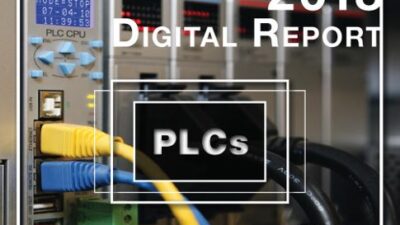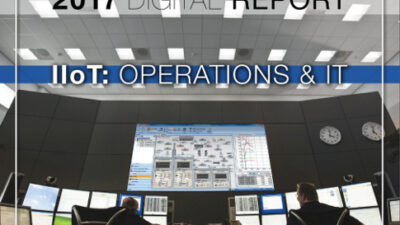It's 10 p.m.—do you know what tripped your motor control center (MCC)? Why and where it tripped? Was the problem preventable? How it should be fixed? And is anything else going to trip and how soon?So many questions, but the future's ultimate yardstick for motor control—not to mention other control and automation fields—will likely be based even more on what can provide ...
It’s 10 p.m.—do you know what tripped your motor control center (MCC)? Why and where it tripped? Was the problem preventable? How it should be fixed? And is anything else going to trip and how soon?
So many questions, but the future’s ultimate yardstick for motor control—not to mention other control and automation fields—will likely be based even more on what can provide the most complete answers first. Users will also probably favor solutions that can bring crucial data to them and lessen find-and-fix expeditions to MCCs in the bowels of their plants.
To help engineers secure answers and save time and shoe leather, Rockwell Automation (Milwaukee, Wis.) introduced Jan. 28 its Allen-Bradley IntelliCenter MCC following a two-year development effort. Consisting of innovative software, hardware, and communications integration, IntelliCenter is based on the traditional A-B Centerline MCC design. IntelliCenter includes dynamically configured screens showing real-time data, trending, component history, wiring diagrams, user manuals, and spare parts. Users can also cut installation time with IntelliCenter’s plug-and-play setup and minimize facility downtime with its diagnostic and preventive failure information.
“Many definitions of smart just mean sticking smart functions in a box, but Rockwell Automation’s concept with IntelliCenter is different,” says Dave Blair, Rockwell’s commercial marketing manager for Packaged Control Products. “We asked three study groups of customers about their needs; where they wanted to go next; and what level would add more value.”
Heart of software
At the core of this MCC development is its new A-B IntelliCenter software. Rockwell states this software, “provides the industry’s ultimate window into an MCC.” For example, the software complements operator interface and product-specific software—such as drive and power monitoring software—by automatically compiling data about the MCC and its components to maximize MCC and related equipment performance.
IntelliCenter software replicates the actual MCC lineup on a PC screen, complete with nameplates and pilot lights on each door to show status—no communication, ready, running, warning, or fault—so users can see problems at a glance. Graphical views of individual MMC units display data for motor controllers, drives, and motor protectors—allowing users to quickly view critical ampere, time-to-trip, trip cause, ground fault ampere, and I/O device statuses. Each screen is preconfigured to show parameters, usually those of most interest to users, though they can also be customized to meet user preference. Trending graphs and analog meters are featured on most screens, as well as data on spare parts, MCC documentation, and event logging.
For viewing flexibility, users can locate IntelliCenter software wherever it’s needed—in a control room, at an engineer’s desk, or on a maintenance technicians’s laptop. Users can also run IntelliCenter software on Ethernet, ControlNet, and DeviceNet networks by using RSLinx, Rockwell Software’s communications driver package.
DeviceNet built-in, add-ons
To simplify installation, relocation, and addition of MCC units, there are six DeviceNet ports at the rear of each IntelliCenter vertical wireway. Users plug in the unit and then plug in the DeviceNet cable. This design also eliminates the shortcomings of daisy chain architecture, such as potential equipment shutdowns when the chain accidentally breaks or the need to shut down the adjacent unit when adding a new unit to the chain. Trunk and drop lines are mounted behind barriers, rather than within the MCC wireways. This isolates the primary DeviceNet cables from mechanical damage. The cable is rated 8 amperes, 600 V, Class 1, which allows routing of DeviceNet cabling next to power wiring and minimizes the need for multiple power supplies.
To secure additional diagnostic data, IntelliCenter can also work with several new Allen-Bradley products, such as E3 solid-state overload relay, 2100-GK61 DeviceNet communication module with inputs, and 22.5 mm DeviceNet system accessory. Besides proactive warning and protection capabilities, E3 includes supplemental I/O devices, control functions, and the ability to operate in a failure-prevention mode. E3 can also identify its location within a system.
For more information, visit www.rockwellautomation.com or www.controleng.com/freeinfo .


